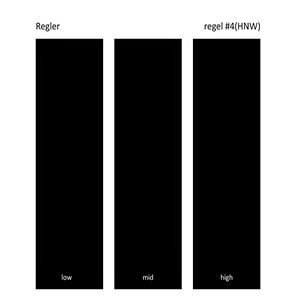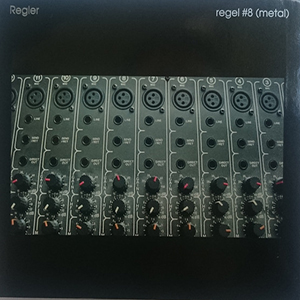 Following up the concept of their most recent works, the duo of noise artist Mattin and Brainbombs member Anders Bryngelsson have again chosen to subvert two niche genres of music and attempt to recreate them in their own, deconstructed noise rock style. In this case, one album of Harsh Noise Walls, and the other three lengthy treatments of various subgenres of heavy metal. Unsurprisingly, the duo's reconstruction of this music ends up being less about imitation and more of a study and critique of what is expected by those specific styles.
Following up the concept of their most recent works, the duo of noise artist Mattin and Brainbombs member Anders Bryngelsson have again chosen to subvert two niche genres of music and attempt to recreate them in their own, deconstructed noise rock style. In this case, one album of Harsh Noise Walls, and the other three lengthy treatments of various subgenres of heavy metal. Unsurprisingly, the duo's reconstruction of this music ends up being less about imitation and more of a study and critique of what is expected by those specific styles.
Rapid Moment/At War with False Noise/Decimation Sociale/Pilgrim Talk
Harsh Noise Wall, or HNW, is a relatively specific offshoot of what is generally labeled noise.Its main practitioners are known for their monochromatic audacity (Vomir, who's Romain Perrot runs the Decimation Sociale label) or approach that borders on personal obsession (The Rita).As a consequence of this, often less emphasis is placed on the actual sound, to the point of it being an almost tongue-in-cheek self-awareness that many styles lack.Mattin and Bryngelsson chose to attack the genre via a guitar and drum duo arrangement, each using their respective instruments to mimic the immobile white noise monolithic sound.
Unsurprisingly, the actual output ends up being dissimilar to actual HNW via the rapid-fire erratic beats and shrill, metallic tinged guitar assaults.Try as they might, they cannot fully replicate that dull roar for the album’s nearly 30 minute duration.Instead though, it sounds more like the detritus of a grindcore demo tape, or the most dissonant moments of a multigeneration heavy metal show bootleg.It also rejects the notion that all HNW style noise sounds the same, or that it is entirely simplistic and unchanging (the best stuff has never been).
samples:
 
 On Metal, however, the duo took a more audience participation approach on the three pieces contained.Each were recorded live at a different venue, with audience members playing Mattin and Bryngelsson a metal song they had never heard off of the audience member’s phone or mp3 player.From this, the duo tried to recreate, or at least improvise based upon what they heard."Heavy Metal" begins with some bleed through of the audience member’s chosen song as Regler slowly get themselves going.At first it sounds like nothing in particular, but after around three minutes the performance fully locks in, with a truly heavy metal sound to it (albeit one that is improvised and messy, as opposed to tight, riff heavy arrangements), ending on an almost progressive rock note.
On Metal, however, the duo took a more audience participation approach on the three pieces contained.Each were recorded live at a different venue, with audience members playing Mattin and Bryngelsson a metal song they had never heard off of the audience member’s phone or mp3 player.From this, the duo tried to recreate, or at least improvise based upon what they heard."Heavy Metal" begins with some bleed through of the audience member’s chosen song as Regler slowly get themselves going.At first it sounds like nothing in particular, but after around three minutes the performance fully locks in, with a truly heavy metal sound to it (albeit one that is improvised and messy, as opposed to tight, riff heavy arrangements), ending on an almost progressive rock note.
For "Thrash Metal", the duo chose to replicate the taut guitar riffs and drum passages in a more abstract manner, via a jerky stop/start erratic structure to the earlier parts of the piece.Those dramatic breakdowns become tense pairings of noise and silence, never locking into a comfortable pattern.The final work, "Black Metal" is perhaps the closest reading of the genre the two performers do.It is fully appropriate that, when mimicking a genre that is so focused on low production values, the result is shrill feedback and a dull roar of noise.The piece has the two mostly creating a dull roar (not unlike the HNW album), but allowing some more conventional metal moments through, even at times allowing the piece to approach some sort of approximated punk/thrash sound.
Like HNW, Metal features Regler playing with the accepted tropes of a genre, but subverting them into an entirely different sound, while simultaneously addressing the criticism that metal (like noise) is a simplistic genre "anyone" can do.By attempting to improvise what they heard, the creation is something entirely different and one that finally bears little resemblance to what they were attempting to imitate.Both albums are excellent, if at times intentionally difficult listening, but Metal stands out a little more as being a more diverse suite of music, but also one that is conceptually strong and still not afraid to bring in a bit of levity in an otherwise dour genre.
samples:
 
Read More

